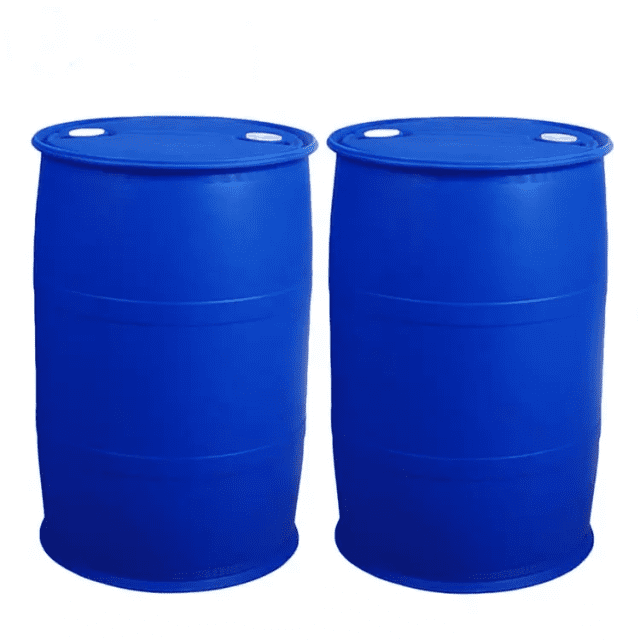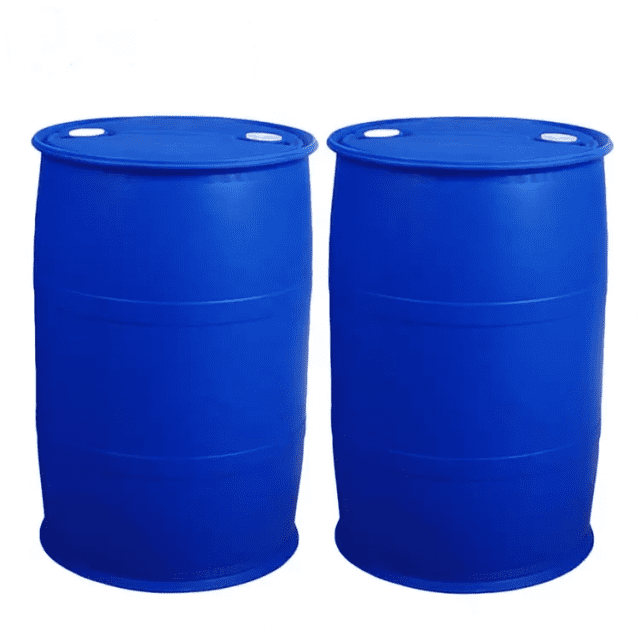During the preparation of polyurethane foam, the role of catalyst is mainly to adjust the speed of foaming reaction and gel reaction to keep them in good balance.
1? Amine catalysts
Triethylenediamine is the most important tertiary amine catalyst in soft foam production, with 60% efficacy in promoting the reaction between isocyanates and water, i.e. foaming reaction. The 40% effect is used to promote the reaction of hydroxyl and isocyanate, that is, gel reaction. The width of triethylenediamine to organotin is narrow, but it can promote the late maturing of foam, and is an indispensable catalyst for all soft foams.
Bis (2-dimethylaminoethyl) ether (A-1) has been recommended as a versatile tertiary amine catalyst for soft foam. It has 80% efficacy to promote foaming reaction, 20% efficacy to promote gel reaction, widening the adjustable range of organotin catalyst, and improving the qualification rate of products. Currently, it is mostly used in combination with triethylenediamine.
Influence of improper dosage of amine catalyst on foam
1. Excessive amine will cause
(1) Short reaction time, rapid increase in initial viscosity, and excessive smoking during foaming
(2) Cracking of foam
2. The amount of amine used is too low
(1) The initial foaming speed is too slow.
(2) Affects foaming height.
2? Tin based catalysts
Stannous octanoate is the most commonly used organic tin catalyst for general-purpose block polyether soft foams. It is highly susceptible to hydrolysis and oxidation in polyether mixtures containing water and tertiary amines.
The adjustable range of tin octoate dosage is wide. The lower the foam density is, the narrower the adjustable range is. The influence of tin dosage is as follows:
Too little: foam cracks
Too much dosage: the viscosity increases quickly, and the foam forms closed pores and shrinks, forming bottom skin and edge skin.
The impact of formula changes on the demand for stannous octanoate can be summarized as follows:
Formula change factor tin octanoate requirement
Reduce water volume
Increase physical foaming agent
Reduce isocyanate index and increase
In actual production, the balance state of foaming reaction and gel reaction is generally adjusted by changing the amount of stannous octoate rather than the amount of amine catalyst.
According to data reports, when producing polyether type blocky soft foam, the relationship between the amount of stannous octoate and the density of foam is as follows:
Where d is the density of foam (kg/m3)
The limiting conditions of this formula are as follows:
(1) Formula dosage based on 100 parts of polyether
(2) When d ? 20kg/m3, the TDI index is 1.06
When d<20kg/m3, the TDI index is 1.10
The index should be between 1.03 and 1.15. If the index is increased, its usage will decrease by about one thousandth of the index increase
(3) If the amount of MC is increased, the increase in stannous octanoate is about two thousandths of MC.
Reference dosage of stannous octanoate at various densities:
Density (kg/m3) Amount of stannous octanoate (by weight)
12 0.34
16 0.27
20 0.23
26 0.21
30 0.2
35 0.19
46 0.17
Related reading recommendations:

Discover how coating catalysts are transforming industries by providing superior surface protection and unparalleled performance benefits.
Introduction
Coating catalysts have emerged as a game-changer in the world of surface protection and enhancement. These innovative materials are revolutionizing various industries, including automotive, aerospace, marine, and electronics, by offering exceptional performance benefits. This article delves into the fascinating world of coating catalysts, exploring their functions, applications, and the cutting-edge advancements that are shaping their future.
Understanding Coating Catalysts
Coating catalysts are specialized substances that initiate or accelerate a chemical reaction in a coating system without being consumed in the process. They play a crucial role in enhancing the properties of coatings, such as corrosion resistance, scratch resistance, hardness, and adhesion. By facilitating the cross-linking of polymers, coating catalysts create a dense and robust network that significantly improves the overall performance of the coating.


Applications of Coating Catalysts
The versatility of coating catalysts has led to their widespread adoption across various industries. Some of the most prominent applications include:
Automotive: Coating catalysts are extensively used in automotive coatings to provide superior protection against corrosion, scratches, and UV radiation. They also contribute to the glossy and aesthetically pleasing appearance of vehicles.
Aerospace: In the aerospace industry, coating catalysts are employed to enhance the durability and resistance of aircraft surfaces to extreme environmental conditions, such as high temperatures, humidity, and chemical exposure.
Marine: The marine sector benefits from coating catalysts in the form of anti-fouling and anti-corrosion coatings, which protect ships and offshore structures from the damaging effects of seawater and marine organisms.
Electronics: Coating catalysts are used in the electronics industry to create conformal coatings that safeguard circuit boards and other electronic components from moisture, dust, and chemical contaminants.
Advancements in Coating Catalysts Technology
The field of coating catalysts is continually evolving, with researchers and manufacturers constantly seeking to develop new and improved materials. Some of the latest advancements in coating catalysts technology include:
Nanotechnology: The integration of nanotechnology in coating catalysts has led to the creation of advanced materials with enhanced properties, such as self-cleaning, self-healing, and anti-microbial functions.
Eco-friendly Catalysts: In response to growing environmental concerns, the development of eco-friendly coating catalysts has gained momentum. These materials are designed to reduce volatile organic compound (VOC) emissions and minimize waste generation during the coating process.
Smart Coatings: Smart coatings, also known as responsive coatings, are a new generation of coating systems that can change their properties in response to external stimuli, such as temperature, light, or pH. Coating catalysts play a crucial role in the development of these intelligent materials.
The Future of Coating Catalysts
As the demand for high-performance, durable, and eco-friendly coatings continues to grow, the market for coating catalysts is expected to expand significantly. According to a recent study, the global coating catalysts market is projected to reach USD 6.5 billion by 2026, growing at a CAGR of 5.2% during the forecast period.
The future of coating catalysts lies in the development of advanced materials that can address the evolving needs of various industries. Researchers are focusing on creating multifunctional catalysts that can provide multiple performance benefits simultaneously, such as corrosion resistance, self-healing, and anti-microbial properties. Additionally, the development of sustainable and eco-friendly coating catalysts will continue to be a priority, as the world moves towards a greener and more environmentally conscious future.
Conclusion
Coating catalysts have undeniably transformed the landscape of surface protection and enhancement, offering unparalleled performance benefits and opening up new possibilities for various industries. As advancements in technology continue to shape the future of coating catalysts, we can expect to see even more innovative and sustainable solutions that will further revolutionize the way we protect and enhance surfaces. With their unique properties and wide-ranging applications, coating catalysts are truly a testament to the power of human ingenuity and the relentless pursuit of progress.
Recommended Reading?

Diluent is based on Cyclohexanone. Butyl acetate. Anhydrous xylene is a mixture of organic solvents.
Curing agents, also known as hardeners, curing agents or modifiers, are a class of substances or mixtures that enhance or control the curing reaction.
Resin curing is the process of irreversible changes in thermosetting resins through chemical reactions such as condensation, ring closure, addition or catalysis, and curing is accomplished by the addition of curing (cross-linking) agents.
Classification of epoxy resin curing agents
(1) Alkaline and acidic curing agents:
(1) alkaline curing agents, including aliphatic diamines and polyamines, aromatic polyamines, other nitrogen compounds and modified fatty amines.
? acidic curing agents, including organic acids, anhydrides, and boron trifluoride and its complexes.
(2) Forming and catalytic curing agents:
This kind of curing agent and epoxy group undergoes addition reaction to form part of the chain segment of the curing product, and makes the linear molecule crosslinked into the body structure molecule through gradual polymerisation reaction, and this kind of curing agent is also known as melon-type curing agent. Such as primary amines, polythiols, polyphenols, low molecular polyamides, organic acids and anhydrides and low condensate curing agent.
? catalytic curing agent This type of curing agent only on the epoxy resin to trigger the role of opening the epoxy group, catalytic epoxy resin itself polymerisation into a network structure, the generation of ether bond as the main structure of the homopolymer, and the curing agent itself does not produce crosslinking reaction. Such as tertiary amine, imidazole, dicyandiamine, boron trifluoride complex, stannous chloride, stannous isooctanoate and stannous octanoate.


Common epoxy resin curing agent introduction:
Epoxy resin curing material has excellent mechanical properties, electrical properties, chemical resistance, and therefore widely used. Curing agent is one of the necessary raw materials for epoxy resin curing material, otherwise the epoxy resin will not be cured. In order to meet the requirements of various applications, the corresponding curing agent should be used. There are many types of curing agents, which are introduced below:
Fatty polyamines
Ethylenediamine
EDA H2NCH2CH2NH2 Molecular Weight 60 Active Hydrogen Equivalent 15 Colourless Liquid 6-8 parts per 100 parts of Standard Resin
Properties: toxic, aggressive odour, high volatility, low viscosity, fast curing at room temperature. Used for bonding, casting and coating. This kind of amine increases with molecular weight, viscosity increases, volatility decreases, toxicity decreases and performance improves. However, they have high heat release and short application period. Generally speaking, the higher molecular weight they have, the less they are affected by the amount of coordination. Prolonged exposure to fatty polyamines can cause dermatitis, and their vapour toxicity is very strong, so they should be operated with great care.
Diethylenetriamine
DETA H2NC2H4NHC2H4NH2 Molecular Weight 103 Active Hydrogen Equivalent 20.6 Colourless Liquid
Use 8-11 parts per 100 parts of standard resin. Curing: 2 hours at 20°C + 30 minutes at 100°C or 4 days at 20°C. Properties: Applicable period 50g 25°C for 45 minutes, heat distortion temperature 95-124°C, flexural strength 1000-1160kg/cm2, compressive strength 1120kg/cm2, tensile strength 780kg/cm2, elongation 5.5%, impact strength
0.4 ft-lb/in Rockwell hardness 99-108. dielectric constant (50 Hz, 23°C) 4.1 power factor (50 Hz, 23°C) 0.009 bulk resistance 2×1016
?-cm Curing at room temperature, high toxicity, high heat release, short application period.
Triethylenetetramine TETA H2NC2H4NHC2H4NHC2H4NH2
Molecular weight 146 Active hydrogen equivalent 24.3 Colourless viscous liquid 10-13 parts per 100 parts of standard resin
Curing: 2 hours at 20°C + 30 minutes at 100°C or 7 days at 20°C. Properties: Applicable period 50g 25?45 minutes, heat distortion temperature 98-124?, flexural strength 950-1200kg/cm2, compressive strength 1100kg/cm2, tensile strength 780kg/cm2, elongation 4.4%, impact strength
0.4 ft-lb/in Rockwell hardness 99-106, room temperature curing, toxicity is slightly lower than diethylenetriamine, heat release, short application period.
Tetraethylenepentamine TEPA
H2NC2H4(NHC2H4)3NH2 Molecular Weight 189 Active Hydrogen Equivalent 27 Brown Liquid 11-15 parts per 100 parts of standard resin.
Properties as above.
PEPA H2NC2H4(NHC2H4)nNH2 Light Yellow Liquid 14-15 parts per 100 parts of standard resin.
Properties: low toxicity, low volatility, long application period, low price.
Dipropylenetriamine DPTA H2N(CH2)3 NH(CH2)3NH2
Molecular weight 131 Active hydrogen equivalent 2
Recommended Related Reading:



